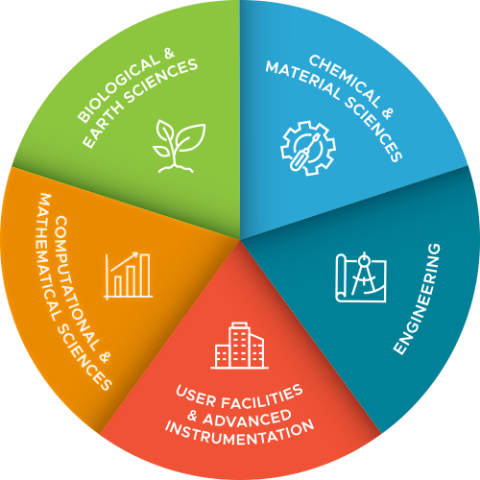DOE
Capabilities
DOE
Capabilities
22 Areas of
PNNL Excellence
22 Areas of
PNNL Excellence
Carl Imhoff showcases PNNL's talent in Systems Engineering and Integration, one of the Lab's DOE-recognized core capabilities, to Secretary Granholm during a virtual tour of PNNL in 2021.
(Photo by Andrea Starr | Pacific Northwest National Laboratory)
As a U.S. Department of Energy (DOE) Office of Science national laboratory, PNNL is the steward of 22 designated DOE core science and technology capabilities. Collectively, these core capabilities define PNNL’s recognized portfolio of expertise. The Office of Science uses three criteria to define the core capabilities resident at each of its 10 national laboratories. A laboratory is designated as possessing a core capability in those areas in which it (1) encompasses a substantial combination of facilities and/or teams of people and/or equipment; (2) has unique and/or world-leading programmatic elements; and (3) its research program and related capabilities are directly applicable to the missions of the DOE, National Nuclear Security Administration, and the Department of Homeland Security.
PNNL’s core capability areas are the foundation of its research performance and provide flexibility and agility in its ability to anticipate and respond to emerging needs and opportunities. This array of missions and wide assortment of distinctive capabilities distinguish PNNL and make it unique within the national laboratory system. For PNNL’s full scope of work, visit the scientific discovery, energy resiliency, and national security mission pages.

Chemical and Material Sciences
- Applied Materials Science and Engineering
- Nuclear/Radio Chemistry
- Isotope Science and Engineering
- Condensed Matter Physics, Materials Science
- Plasma/Fusion Sciences
- Chemical and Molecular Science
Engineering
- Nuclear Engineering
- Chemical Engineering
- Mechanical Design and Engineering
- Systems Engineering and Integration
- Power Systems, Electrical Engineering
- Microelectronics
Biological and Earth Sciences
- Biological and Bioprocess Engineering
- Biological Systems Science
- Earth/Energy Systems, Infrastructure Analysis and Engineering
- Earth, Environmental, and Atmospheric Science
Computational and Mathematical Sciences
- Advanced Computer Science, Visualization, and Data
- Computational Science
- Applied Mathematics
- Cyber and Information Sciences
- Decision Science and Analysis